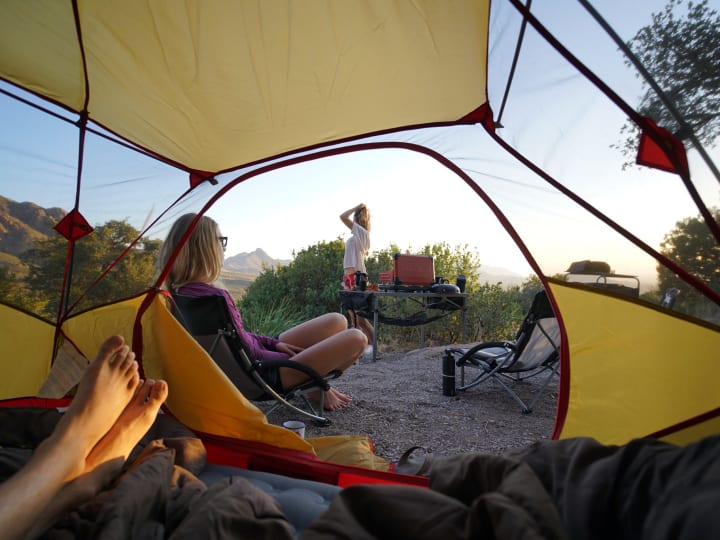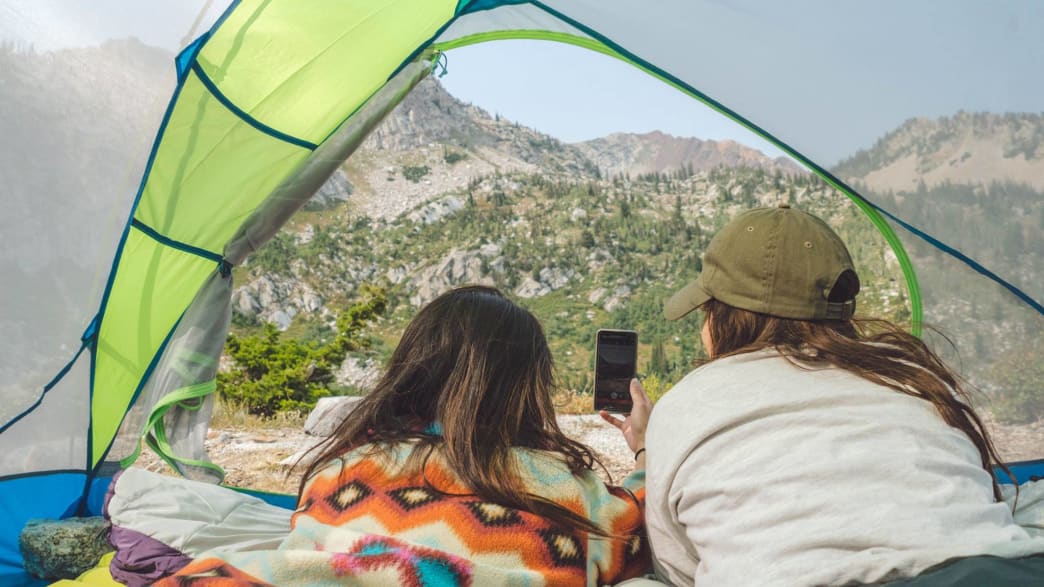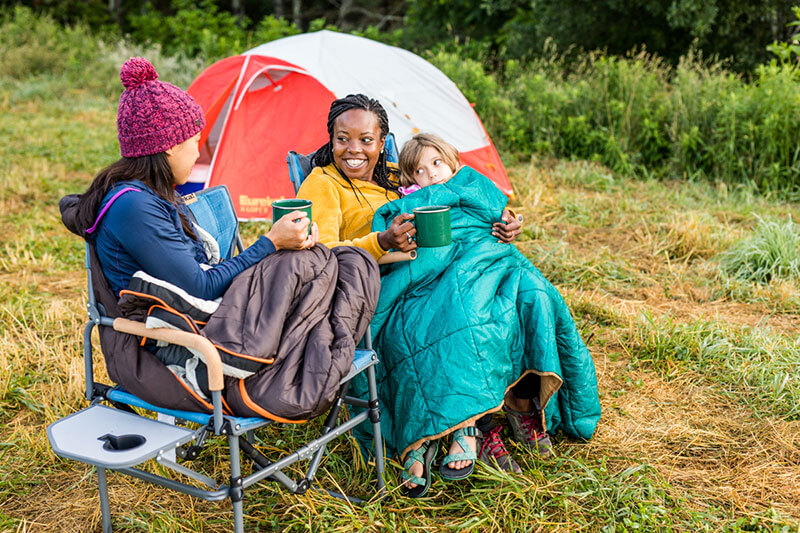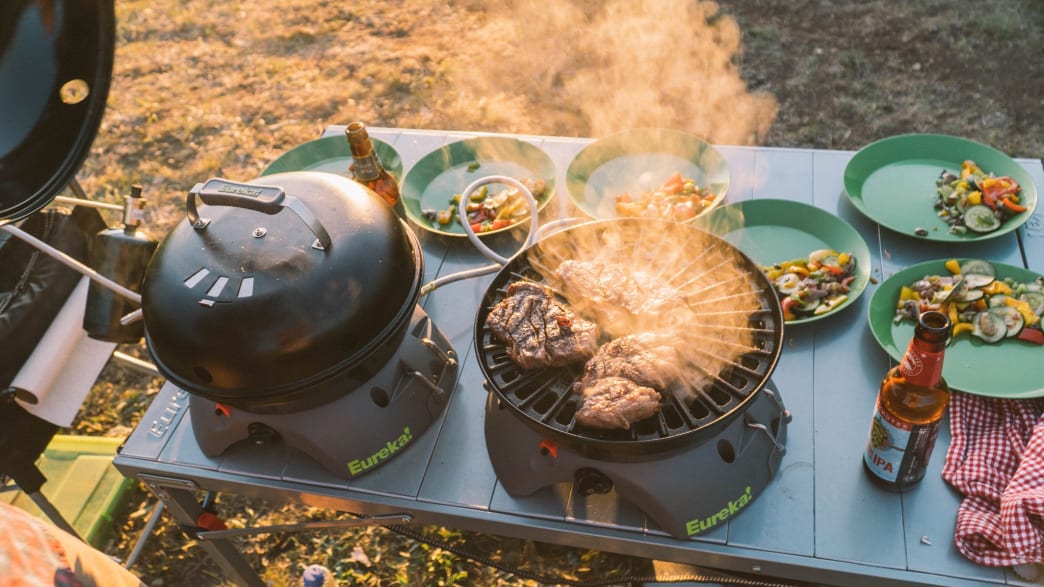3 Campsite Designs for 3 Different Personalities: Adventure, Family, Luxury

Camping is not a one-size-fits-all activity. In fact, there are many ways to enjoy it, and that includes a variety of ways to set up your campsite. If you are someone who likes to go super light-weight and rough it, we’ve got you covered. Prefer something a little more cush with pillows and festive white-string party lights? Check. Have kids running around that need to be entertained? We got that too. Here’s our breakdown of some different types of camping and how you can set up your site so it is best suited to your personal style.
ADVENTUROUS CAMPERS: BACKCOUNTRY CAMPING

What it entails: Backcountry camping means you’ll be packing a backpack with everything you need for hiking and at least one overnight in the backcountry: a sleep system, tent, food, and proper clothes to suit the weather. You’ll hike to your site, set up your tent, and enjoy a night under the stars away from the noise and crowds of civilization.
Pros: Spending a night in the backcountry instead of simply day hiking is a whole new experience. You’ll likely feel a thrill at the idea of being away from home without a car nearby, and a sense of peace or adventure that comes with that isolation.
Cons: Spending a night in the woods can be nerve-wracking at first, and that’s perfectly normal. Backpacking to your campsite also requires more effort than car camping, and you’ll need to have the right gear that will keep you comfortable in the backcountry without weighing you down and making the hike miserable. Navigation can be tricky in the backcountry, so be sure you know where you are going.
How to prepare for your first trip: If you’ve never been backcountry camping before, there are a few key pieces of information you should know and prepare for before heading out:
- Pick a simple out-and-back for your first trip. Have a good sense of the trail and what the site looks like.
- Know the water situation at the site, and be prepared to filter your own for cooking and drinking.
- Be aware of any wildlife in the area. Do you need to hang a bear bag?
- How cold will it get overnight? You won’t have a car to jump into if you get cold or nervous, so be ready for changing conditions.
- Pack plenty of food for trail snacks, dinner at camp, and breakfast in the morning, and make sure you know how to use your stove before you leave.
FAMILY CAMPERS: CAR CAMPING

What it entails: Driving to a destination and setting up at a front-country campsite, usually with amenities like a latrine, a designated campsite, a picnic table, and fire ring.
Pros: You’ll have the ability to bring anything you want. Biking trails nearby? Bring your bikes. Want a blanket from home? Throw it in the car. Car camping is an ideal middle ground between backpacking and throwing a tent up in your backyard.
Cons: Some spots fill up quickly, and it takes some planning to find and reserve a space. Read site reviews online as well, front-country campsites can be busy and occasionally noisy.
How to prepare for your first trip: Car camping is great for everyone—from families looking to get outside to outdoorsmen using it as a basecamp for day outings in a new destination. Since you’ll be taking your car to the site, you don’t have to worry about pack weight, and you can bring comfort items like real pillows, heavier cookware, and entertainment options for kids. Pack activity-ready clothing, portable sanitizing wipes, supplies for cooking meals over a camp stove, like Eureka’s Ignite, or fire, and your tent if you plan to set one up at the site.
Many front-country campsites require reservations, so do your research to ensure you’ll have a spot once you arrive. Expect to pay between $10-30 for a campsite per night. Download trail information and maps beforehand, as locations in national forests or state parks might not have service. Check the water situation as well—potable water is not a guarantee.
LUXURY CAMPERS: GLAMPING

What it entails: This is camping in style—most often in an incredible location. If you’re heading out for a glamping trip, chances are you’re not setting up your own site. Different companies and businesses in the glamping market specialize in building large, sturdy wall tents with the capacity for running water, full beds with linens, and platforms to keep you off the ground. Sites are often located near national parks, scenic vistas, and other naturally stunning destinations to get you out of the house while still maintaining the maximum level of comfort.
Pros: Glamping is as comfortable as it gets, and most logistics are taken care of before you get there. Food is often offered on-site, and agents with the business can help plan your activities and offer advice on how to get the most out of your stay.
Cons: This is the most expensive way to camp, so be prepared with a hefty budget.
How to prepare for your first trip: Besides figuring out where you want to go and reserving a site, there’s not much else to do. The point of glamping is to have things done for you. All you need to bring is what you’ll need for daytime excursions in the area, including appropriate clothing and plenty of camera gear to photograph the adventures.
It doesn’t matter whether you are a glamper or hardcore, lightweight backpacker, your campsite can be molded into whatever vibe you are feeling. Check out some amazing trip opportunities where you can let your personal style shine through. Grab a tent and get camping!